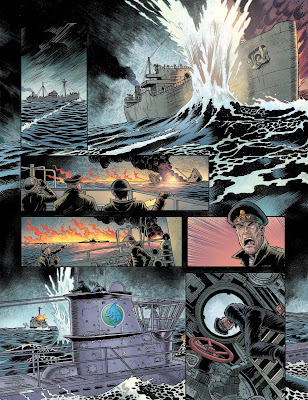The BBC's Dr Who, soon to be Disneyfied, is now sixty years old and much loved around the world - it has a legion of committed fans - some of whom should indeed be committed if the message boards are anything to go by.
Over the years the show has taken many bold moves; some which worked, some which did not.
Sadly, casting a female Doctor in the form of Jodi Whittaker was a notable failure, but this was largely down to the fact that the show seemed to have lost its way under the guidance of the then show-runners, rather than any shortcomings of the actor. And given the show's concept it was not really a bold move in the first place. The Doctor after all is an alien who can regenerate when a current body has been worn down and regeneration is not limited by gender, so there is no real reason why the character can't be female. It's such a pity the Whittaker era was defined by dumb scripts and needless re-writing of the show's history.
To put this right the BBC brought back Russel T Davies as showrunner and fan favourite David Tennant as the Doctor for a run of three episodes before regenerating (as I write this is only a few weeks away) into Ncuti Gatwa, who will make history as the first black actor to take on the role.
The show is in a state of flux.
The show itself is regenerating.
The BBC have now gone into partnership with Disney for future production of the show and some fans are dubious - it is arguable that Disney have managed to ruin both Marvel and Star Wars, with franchise over saturation.
"The deal with Disney will elevate the show to even greater heights and reach new audiences so it's an extremely exciting time for fans in the UK and across the world." Charlotte Moore, BBC Chief Content Officer.
Accused of extreme wokery it has now been decided that the iconic villain, Davros will be able bodied rather than a disabled character - though, the fact that the character was never represented as disabled but rather as someone who had replaced most of his body with cybernetic parts so that he is half man/half machine, seems to have been overlooked. This move has even attracted criticism from disabled viewers and rightly so, because it just may be one of the dumbest moves the show has ever taken.
“Speaking out as a disabled man in a wheelchair, I am highly offended by Russell T Davies’ claim to change Davros to no longer be in a wheelchair, for fear of offending people like me."
“What the hell comes next? Changing a Dalek for fear of offending a salt shaker? World gone mad.”
“What’s offensive is treating all disabled people as the same, assuming we all automatically identify with one another.”
Another iconic villain given a wokeformation is the Celestial Toymaker who is now just the Toymaker, but that upgrade is genuinely understandable given the racist connotations of the original character .
The original appearance of the toymaker even featured a character using the, N word. I kid you not, but remember this was the 1960's and the character is reciting the rhyme eenie, meenie, miney mo.
Schoolkids everywhere used to recite the rhyme and yep, it contained the N word. It's not a word any decent person would use these days, I certainly wouldn't in any context, though back then if I recited the rhyme then I would have and wouldn't have thought anything of it. Times have changed, so I guess I understand why the Celestial Toymaker is now just the Toymaker.
That, at least makes sense.
What makes no sense is that now every character, hero or villain, is non-gender specific with an axe to grind. It is supposed to be a sci-fi adventure show, but these days it undoubtedly has some sort of agenda attached to it. Good intentions may be driving this agenda, but it can come across as preachy.
Yes, Doctor Who is in a state of flux.
But that's always been the case.
Right from the beginning the show has been in a state of flux, - it's had it detractors, its critics and the show has never been truly secure, always teetering on the edge of cancellation.
It would seem though that the show is truly indestructible and even during the wilderness years, when the show was off-air, it continued in one form or another - books, comics, audio-dramas and even an ill-fated TV Movie which featured in Paul McGann a rather excellent Doctor, all added to what the BBC are now calling the Whoniverse.
So what next?
Who know?


.jpg)
.jpg)

.jpg)
.jpg)

































